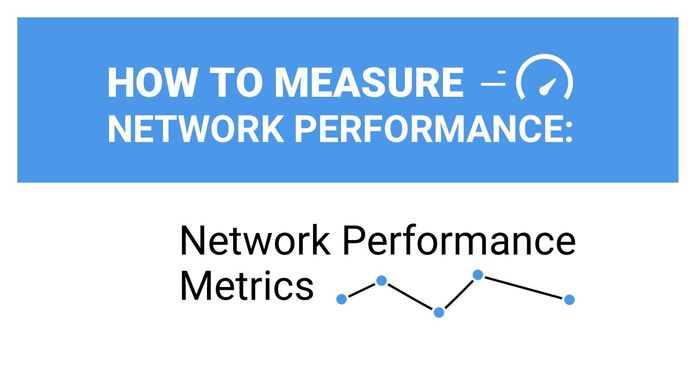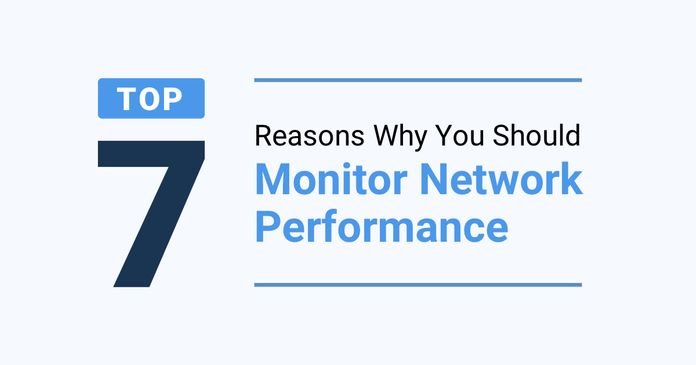Table of Contents
Table of Contents
Whether it's a small business network or a complex enterprise infrastructure, maintaining optimal network performance and security is paramount. This is where network monitoring comes into play.
Active vs. Passive Network Monitoring: Which Method is Right for You? In this comprehensive guide, we delve into the world of network monitoring and explore two fundamental approaches: active and passive monitoring. By understanding the differences, benefits, and considerations associated with each method, you'll be equipped to make informed decisions about implementing the most suitable network monitoring strategy for your organization.
Networks serve as the backbone of modern business operations, facilitating the flow of information and enabling critical applications and services. However, networks are not immune to issues such as bottlenecks, latency, security breaches, and performance degradation. Without proactive monitoring, these issues can go unnoticed, resulting in downtime, compromised data, and dissatisfied users.
Network monitoring involves the continuous observation and analysis of network infrastructure, devices, and traffic patterns to ensure optimal performance, availability, and security. By monitoring key metrics, such as bandwidth utilization, latency, packet loss, and device health, network administrators gain valuable insights into network behavior, allowing them to identify and resolve issues promptly.
Active and passive monitoring are two distinct approaches to network monitoring, each offering unique capabilities and benefits. Let's briefly explore the essence of these two methods:
Active Network Monitoring: This method involves the active generation of test traffic or probes by dedicated monitoring tools or software. Active monitoring typically relies on synthetic transactions, such as pinging a device or performing scripted tests, to assess network performance and detect potential issues. It provides real-time insights into network availability, response times, and application performance.
Passive Network Monitoring: Unlike active monitoring, passive monitoring does not inject additional traffic into the network. Instead, it captures and analyzes the existing network traffic, often through the use of network taps or port mirroring. Passive monitoring provides a comprehensive view of actual network behavior, allowing for detailed analysis of traffic patterns, security threats, and application performance over time.
Throughout this guide, we'll explore the nuances of active and passive monitoring, helping you grasp their core principles, benefits, and considerations. By the end, you'll have the knowledge and insights necessary to determine which method aligns best with your organization's specific needs and goals.
Active network monitoring is an approach that involves the active generation of test traffic or probes to assess network performance and detect potential issues.
By simulating network transactions and actively monitoring network devices and applications, organizations can gain real-time insights into the health, availability, and responsiveness of their networks. In this section, we will delve deeper into the principles, benefits, techniques, and use cases of active network monitoring.
Active network monitoring revolves around the proactive generation of synthetic transactions or test traffic to evaluate various aspects of network performance. This method relies on specialized monitoring tools or software to send out requests or perform scripted tests, simulating user interactions with the network infrastructure, devices, or applications. The responses to these synthetic transactions provide valuable information about network latency, response times, packet loss, and other performance indicators.
The core principles of active network monitoring include:
- Proactive Testing: Active monitoring takes a proactive approach by actively generating test traffic and monitoring network devices and applications. It enables organizations to identify and address issues before they affect users or cause significant disruptions or network disconnections.
- Real-Time Insights: By continuously monitoring network performance in real time, active monitoring provides immediate feedback on network health, availability, and performance. This allows for quick troubleshooting and rapid response to emerging issues.
- Controlled Testing Environment: Active monitoring allows organizations to create controlled testing environments by generating test traffic at specific intervals, during different network conditions, or across targeted segments. This controlled testing helps identify performance bottlenecks, assess network capacity, and evaluate application responsiveness.
Active network monitoring offers several benefits that make it a valuable tool for network administrators and IT teams. Some of the key advantages of active monitoring include:
- Real-Time Problem Detection: Active monitoring enables the quick detection of network issues, such as latency spikes, packet loss, or unresponsive applications. By receiving real-time alerts and notifications, network administrators can promptly investigate and resolve problems, minimizing network downtime and ensuring a positive user experience.
- Performance Optimization: Through active testing, organizations can identify and optimize network performance bottlenecks. By measuring key performance metrics, such as response times or network throughput, administrators can pinpoint areas that require improvement and implement necessary optimizations to enhance overall network efficiency.
- Capacity Planning: Active monitoring helps organizations plan for future growth and capacity requirements. By simulating increased network traffic or application usage, administrators can assess the impact on network performance and make informed decisions about network infrastructure upgrades or capacity expansions.
- Service Level Agreement (SLA) Monitoring: Active monitoring plays a crucial role in ensuring compliance with service and Internet SLAs and performance commitments. By continuously testing and measuring performance against agreed-upon metrics, organizations can monitor service levels, identify any deviations, and take corrective actions if necessary.
Active network monitoring relies on various techniques and tools to simulate network transactions and monitor network performance. Here are some commonly used techniques and tools in active monitoring:
Ping and ICMP-based Monitoring: Pinging is one of the simplest and most widely used techniques for active monitoring. It involves sending Internet Control Message Protocol (ICMP) Echo Request packets to a target device or host and waiting for an ICMP Echo Reply. The round-trip time (RTT) and packet loss can be measured to assess network responsiveness and availability.
Scripted Testing: Scripted testing involves creating customized scripts that emulate specific user actions or transactions within applications. These scripts can be executed at regular intervals to monitor application response times, validate functionality, and detect any anomalies or errors.
Performance Monitoring Tools: Dedicated performance monitoring tools provide comprehensive functionality for active monitoring. These tools often include features such as synthetic transaction generation, real-time alerts, performance analytics, and reporting capabilities. Examples of popular performance monitoring tools include Nagios, SolarWinds Network Performance Monitor, and Paessler PRTG Network Monitor.
Traffic Generation Appliances: Traffic generation appliances, such as network traffic generators or network test equipment, produce synthetic traffic at scale to assess network performance, stress test devices, or validate Quality of Service (QoS) settings. These appliances are particularly useful for testing network capacity, network load balancing, or resilience.
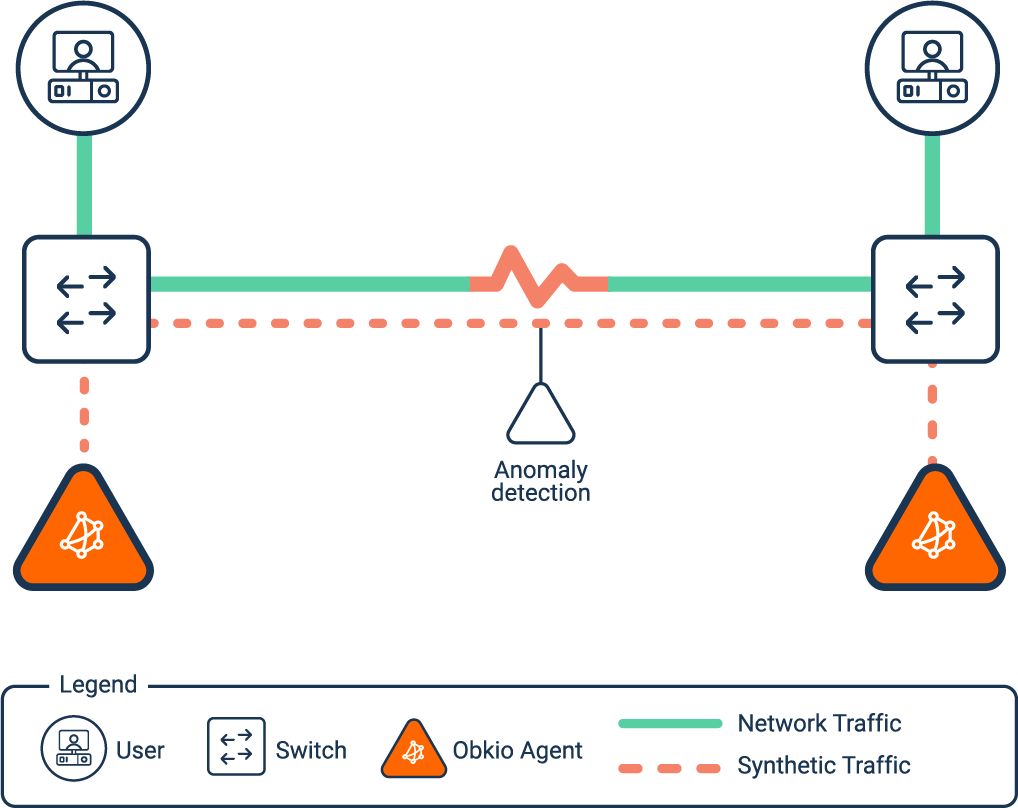
Active network monitoring finds applications in various scenarios and use cases. Here are a few examples:
Application Performance Monitoring: Active monitoring allows organizations to monitor the responsiveness and availability of critical applications using Application Performance Monitoring. By simulating user transactions, administrators can identify any performance issues or anomalies and take corrective actions to ensure optimal application delivery.
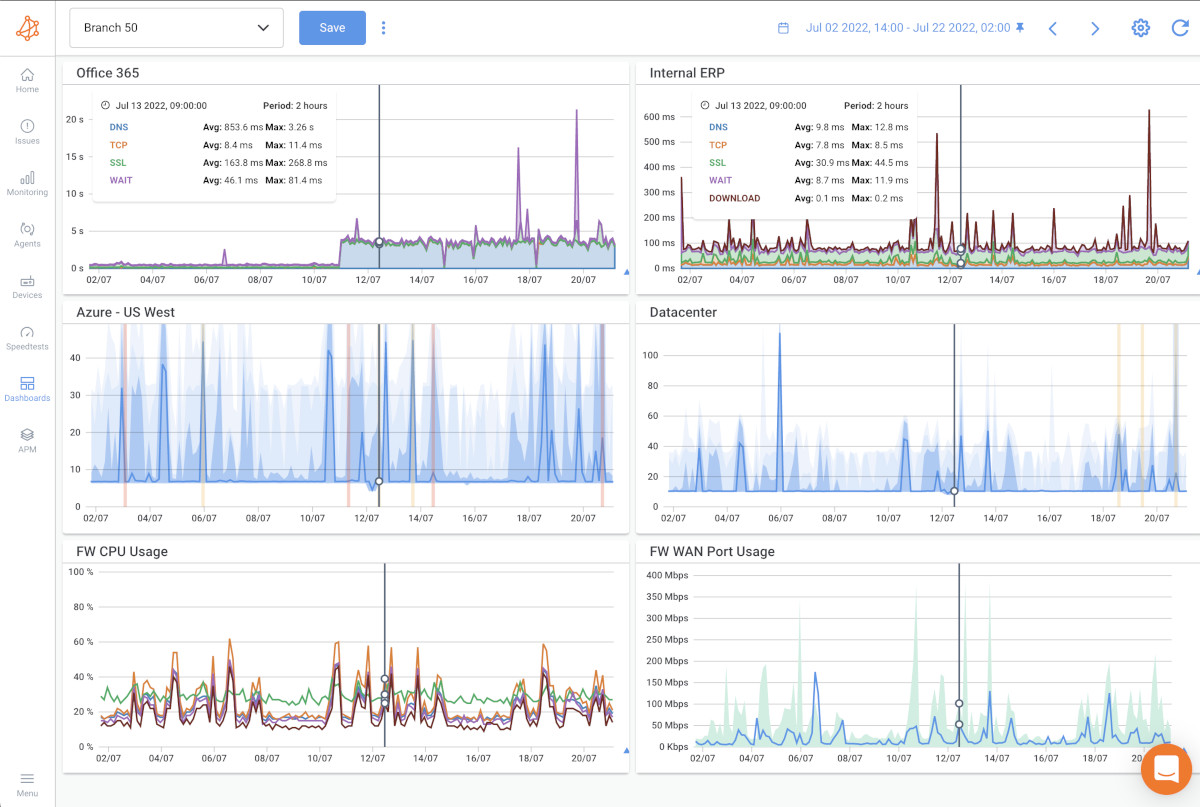
Network Performance Testing: Active monitoring is commonly used to measure and validate network performance during or after infrastructure changes, such as network upgrades or configuration modifications. By generating synthetic traffic, administrators can assess the impact of these changes on network latency, throughput, and overall performance with synthetic testing.
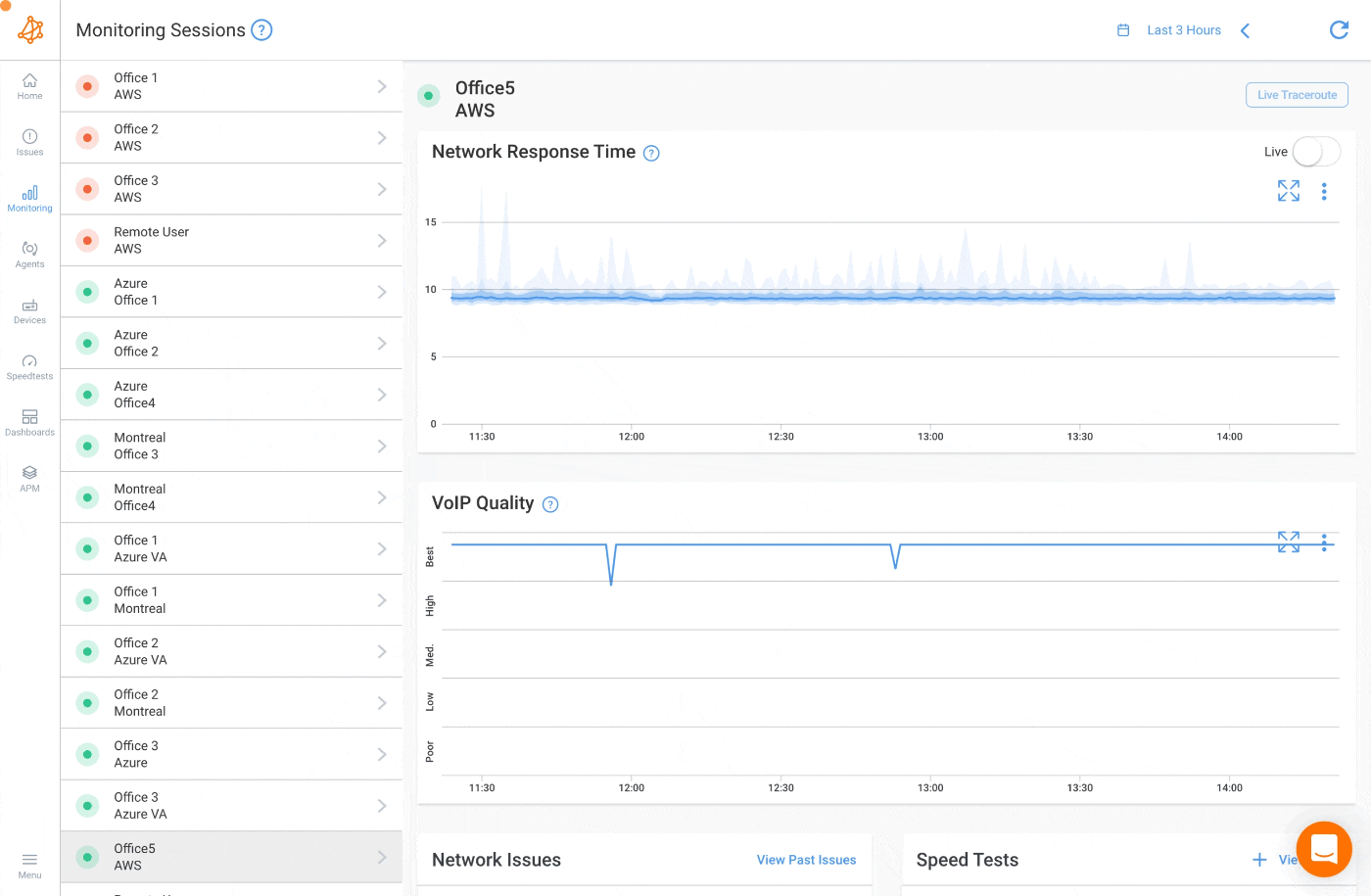
Service Level Agreement (SLA) Compliance: Active monitoring helps organizations monitor and ensure compliance with SLAs and performance agreements with third-party vendors or service providers. By continuously testing and measuring performance against agreed-upon metrics, organizations can proactively address any deviations and hold vendors accountable.
Troubleshooting and Diagnostics: Active monitoring plays a crucial role in troubleshooting network issues. By actively generating test traffic and monitoring responses, administrators can identify the root causes of problems, isolate network segments or devices experiencing issues, and initiate timely resolutions.
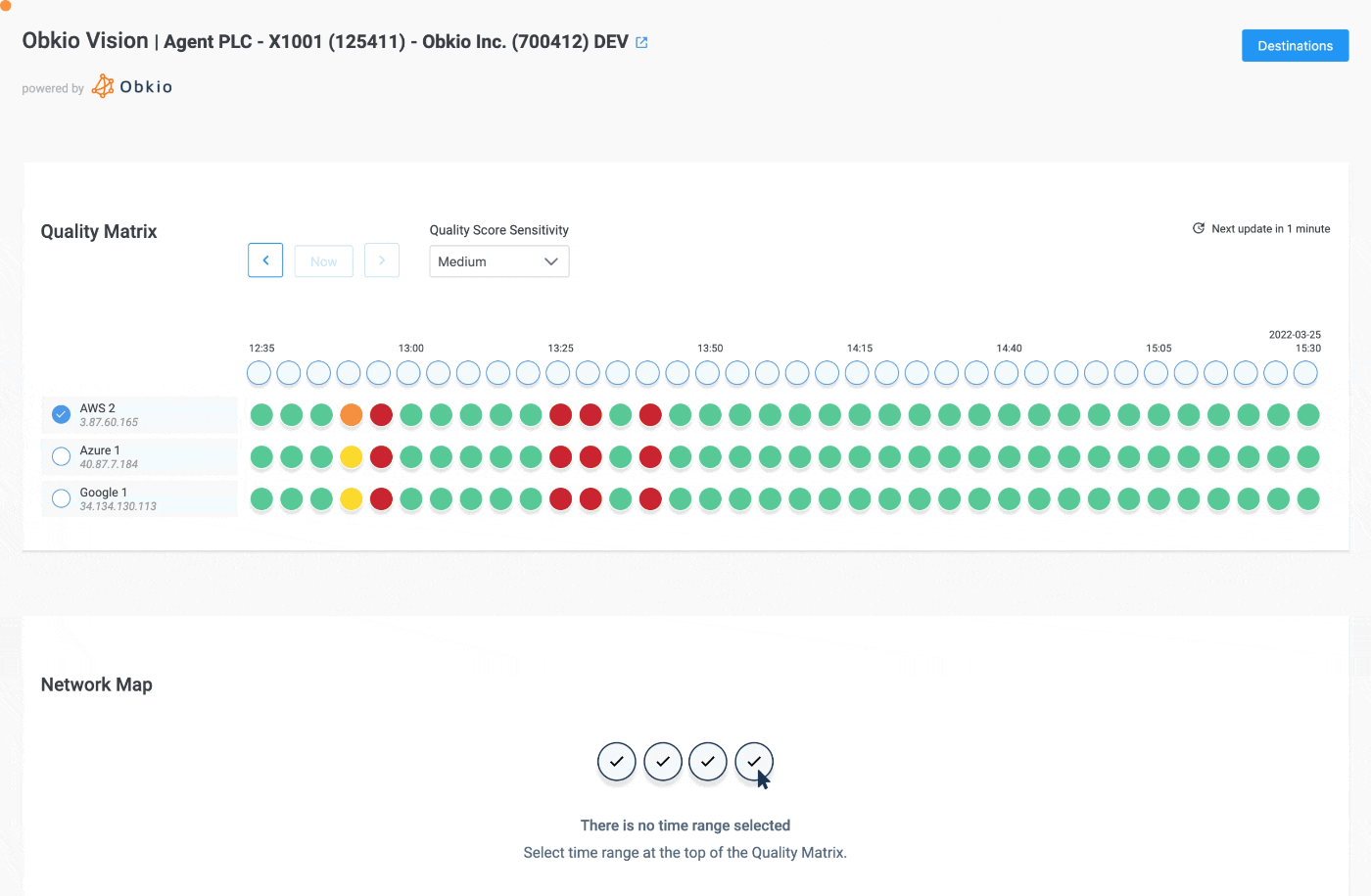
In the next section, we will explore passive network monitoring, its principles, benefits, and how it differs from active monitoring.
Passive network monitoring is an approach that involves the capturing and analysis of existing network traffic to gain insights into network behavior, performance, and security. Unlike active monitoring, which generates synthetic traffic, passive monitoring operates by observing and recording the actual flow of data within the network. In this section, we will explore the principles, benefits, techniques, and use cases of passive network monitoring.
Passive network monitoring relies on the collection and analysis of network traffic data without interfering with or injecting additional traffic into the network. It captures packets or data frames flowing across network links and interfaces, providing a comprehensive view of the network's behavior, including traffic patterns, application usage, and communication protocols.
The principles of passive network monitoring include:
Non-Intrusive Data Collection: Passive monitoring observes network traffic without introducing additional load or disruptions. By collecting packets passively, it provides an accurate representation of actual network behavior and performance.
Granular Traffic Analysis: Capturing and analyzing packet-level data allows for detailed examination of network traffic, including application protocols, source and destination addresses, packet sizes, and payload contents. This level of granularity enables deep insights into network utilization, performance, and security.
Post-Capture Analysis: Unlike active monitoring, which provides real-time insights, passive monitoring relies on post-capture analysis of stored network traffic data. This approach allows for retrospective examination and long-term trend analysis, making it particularly valuable for historical analysis, forensic investigations, and compliance audits.
Passive network monitoring offers several benefits that make it an indispensable tool for network administrators, security teams, and analysts. Some of the key advantages of passive monitoring include:
Comprehensive Network Visibility: Passive monitoring provides a holistic view of network traffic, allowing organizations to gain insights into all communication occurring within the network. It enables administrators to identify top talkers, monitor application usage, detect anomalous behavior, and uncover potential security threats.
Accurate Performance Analysis: By capturing and analyzing actual network traffic, passive monitoring provides accurate and unbiased performance metrics. It enables organizations to assess metrics such as throughput, latency, jitter, and packet loss, allowing for precise performance analysis and troubleshooting.
Security Threat Detection: Passive monitoring serves as a powerful tool for detecting and investigating security threats and breaches. By examining packet payloads and identifying suspicious patterns or signatures, security teams can quickly identify potential threats, initiate incident response measures, and enhance network security posture.
Capacity Planning and Traffic Engineering: Passive monitoring helps organizations in capacity planning by providing insights into network utilization trends. By analyzing historical traffic data, administrators can identify peak usage periods, assess bandwidth requirements, and optimize network resources for efficient traffic engineering.
Passive network monitoring relies on various techniques and tools to capture, store, and analyze network traffic data. Here are some commonly used techniques and tools in passive monitoring:
Network Taps: Network taps are hardware devices that provide a direct and passive access point for capturing network traffic. They are typically installed inline between network devices or links and passively copy all traffic flowing through them for monitoring purposes.
Port Mirroring: Port mirroring, also known as port monitoring or switch port monitoring, involves configuring network switches to replicate traffic from selected ports to a monitoring port. This technique allows the monitoring device to receive a copy of all the traffic passing through the mirrored ports for analysis.
Packet Capture Software: Packet capture software, such as Wireshark, Tcpdump, or Suricata, captures and stores network packets for later analysis. These tools enable administrators to filter, search, and inspect packet-level details to gain insights into network behavior, troubleshoot issues, or investigate security incidents.
Network Analysis Platforms: Dedicated network analysis platforms, such as Zeek (formerly known as Bro), provide advanced capabilities for capturing, processing, and analyzing network traffic. These platforms offer powerful protocols analysis, traffic and network visualization, and security monitoring features.
Passive network monitoring finds applications in various scenarios and use cases. Here are a few examples:
Application Behavior Analysis: Passive monitoring allows organizations to understand how applications utilize network resources. By examining packet-level details and application protocols, administrators can gain insights into application behavior, response times, and data transfer patterns.
Security Incident Detection and Investigation: Passive monitoring is crucial for detecting and investigating security incidents. By capturing and analyzing network traffic, security teams can identify indicators of compromise, analyze attack patterns, and perform forensics to understand the scope and impact of security breaches.
Compliance and Regulatory Requirements: Passive monitoring plays a vital role in meeting compliance and regulatory requirements. By capturing and storing network traffic data, organizations can demonstrate adherence to security policies, perform audits, and respond to compliance inquiries.
In the next section, we will compare active and passive network monitoring, highlighting their differences and key considerations for choosing the right method for your organization.
Active and passive network monitoring are two distinct network monitoring protocols with their own strengths and considerations. In this section, we will compare active and passive monitoring, highlighting their differences, key characteristics, and factors to consider when choosing the right method for your organization.
One of the primary differences between active and passive monitoring lies in their approaches to network visibility and data collection.
Active monitoring relies on synthetic transactions and probes to actively generate test traffic and collect real-time performance data. It provides immediate insights into network health, response times, and application performance. Active monitoring can be useful for proactive troubleshooting, identifying performance bottlenecks, and detecting issues as they occur.
Learn how to use synthetic monitoring to monitor network performance & identify network issues, and the benefits of synthetic traffic over packet capture.
Learn more

Passive monitoring, on the other hand, captures and analyzes existing network traffic without introducing additional load or disruption. It provides a comprehensive view of actual network behavior, including application usage, traffic patterns, and security threats. Passive monitoring excels in historical analysis, long-term trend identification, and forensic investigations.
When choosing between active and passive monitoring, consider the level of visibility and data granularity you require. Active monitoring offers real-time insights into network performance, while passive monitoring provides a more comprehensive and detailed view of historical traffic patterns.
Another crucial consideration when comparing active and passive monitoring is the impact they have on network performance and resource utilization.
Active monitoring generates synthetic traffic, which can introduce additional load on the network. While the impact is usually minimal, it is essential to ensure that the testing traffic does not overwhelm the network or affect the performance of critical applications. Active monitoring may require dedicated resources, such as monitoring tools, probes, or traffic generation appliances.
Passive monitoring, on the other hand, does not generate additional traffic and operates non-intrusively by capturing existing network packets. It has a minimal performance impact and does not require dedicated resources for generating synthetic traffic. However, passive monitoring may require storage and processing resources to store and analyze captured network traffic data.
Consider the impact on network performance and resource requirements when evaluating active and passive monitoring methods. Ensure that your network can handle the additional load generated by active monitoring, or allocate sufficient storage and processing capacity for passive monitoring data analysis.
Active monitoring provides real-time insights into network performance, allowing for immediate detection and resolution of issues. It is well-suited for proactive monitoring, instant troubleshooting, and performance optimization. Active monitoring excels in situations where immediate action is required to maintain network availability and user satisfaction.

Passive monitoring, on the other hand, focuses on historical analysis and long-term trend identification. It captures and stores network traffic data, allowing for retrospective examination and deep analysis of network behavior. Passive monitoring is particularly valuable for forensic investigations, compliance audits, and identifying patterns or trends over extended periods.
Consider your monitoring objectives and requirements when deciding between real-time monitoring and historical analysis. If immediate issue detection and resolution are critical, active monitoring may be more suitable. If you need detailed historical data for analysis, compliance, or long-term trend identification, passive monitoring is the way to go.
When choosing between active and passive monitoring, consider the following factors:
Network Size and Complexity: Active monitoring may be more suitable for smaller networks with limited traffic, while passive monitoring excels in larger and more complex environments with higher volumes of network traffic.
Monitoring Goals and Objectives: Define your monitoring goals and objectives clearly. Determine whether you require real-time performance insights, historical analysis, security threat detection, or compliance adherence.
Cost and Resource Allocation: Evaluate the cost and resource implications of each monitoring method. Consider the hardware, software, and personnel requirements for active and passive monitoring, as well as ongoing maintenance and operational costs.
Security and Privacy Considerations: Active monitoring involves generating test traffic, which can potentially raise security and privacy concerns. Passive monitoring, on the other hand, captures and stores network traffic data, which must be appropriately protected to ensure data privacy and compliance with regulations.
Operational Requirements and Objectives: Consider your organization's operational requirements and objectives. Determine whether proactive real-time monitoring or historical analysis aligns better with your operational practices and goals.
By considering these factors and aligning them with your organization's specific needs, you can make an informed decision about the most suitable method for your network monitoring requirements.
Confidently navigate the network monitoring tools landscape with our ultimate buyer's guide. Expert insights, use cases, and tips for informed choice
Learn more

While active and passive monitoring are distinct approaches, they are not mutually exclusive. In fact, organizations can benefit from combining both methods to create a comprehensive network monitoring strategy.
By leveraging the strengths of active and passive monitoring together, organizations can achieve a more holistic view of their network performance, security, and overall health.
Unlock the power of network performance reporting with Obkio. Learn the benefits, best practices, and real-world examples. Optimize your network today.
Learn more

In this section, we will explore the synergy and benefits of combining active and passive monitoring and provide insights on implementing complementary strategies.
Combining active and passive monitoring allows organizations to harness the unique advantages of each method and overcome their limitations. By integrating both approaches, organizations can create a monitoring ecosystem that provides real-time insights, historical analysis, and a comprehensive view of network behavior. The synergy of active and passive monitoring offers several benefits:
Enhanced Visibility: Active monitoring provides immediate insights into network performance, alerting administrators to issues in real-time. Passive monitoring complements this by capturing and analyzing network traffic data over an extended period, enabling historical analysis and long-term trend identification.
Comprehensive Security Monitoring: Active monitoring helps detect security threats and breaches as they occur, while passive monitoring allows for in-depth analysis of network traffic to identify patterns, anomalies, and potential indicators of compromise. The combination of both methods strengthens the organization's security posture and incident response capabilities.
Optimized Resource Utilization: Active monitoring generates synthetic traffic, which can be focused on specific areas or applications of interest. By targeting critical network segments, active monitoring optimizes resource utilization and narrows down troubleshooting efforts. Passive monitoring, on the other hand, captures overall network traffic, providing a broader context for analysis.
To implement a complementary active and passive monitoring strategy, consider the following network monitoring best practices:
Define Monitoring Objectives: Clearly define your monitoring objectives, including the specific metrics, performance indicators, and security parameters you want to monitor. This will guide the selection and configuration of active and passive monitoring tools and techniques.
Identify Monitoring Points: Determine the strategic locations within your network where active monitoring probes or traffic generation should be deployed. These points should focus on critical areas, such as network gateways, important applications, or high-traffic segments. For passive monitoring, identify the network links or interfaces where packet capture and analysis should take place.
Integrate Monitoring Tools and Systems: Choose monitoring tools and systems that support both active and passive monitoring. Ensure compatibility and seamless integration between the active monitoring tools, passive monitoring solutions, and the overall network monitoring infrastructure.
Establish Monitoring Workflows: Define monitoring workflows and processes that leverage the strengths of both active and passive monitoring. Establish guidelines for interpreting and correlating the data obtained from active and passive sources, ensuring effective incident response and troubleshooting.
Monitor and Optimize Performance: Continuously monitor and optimize the performance of your active and passive monitoring systems. Regularly assess the accuracy, coverage, and relevance of the generated test traffic for active monitoring. Similarly, review the effectiveness of your passive monitoring infrastructure in capturing the required network traffic and adjust as needed.
By implementing complementary active and passive monitoring strategies, organizations can create a robust network monitoring framework that provides real-time insights, historical analysis, and comprehensive security monitoring capabilities.
Choosing the right network monitoring method, whether active, passive, or a combination of both, requires careful evaluation of your organization's specific needs and goals.

In this section, we will explore the key considerations and steps involved in evaluating your network monitoring requirements to make an informed decision.
Begin by assessing your organization's existing network monitoring capabilities. Evaluate the tools, systems, and processes currently in place and identify any gaps or limitations. Consider the following aspects:
Scope of Monitoring: Determine the extent to which your current monitoring covers network performance, availability, security, and other key metrics. Assess whether your existing monitoring provides real-time insights, historical analysis, or both.
Data Collection Methods: Evaluate the data collection methods employed in your current monitoring setup. Determine if you are capturing packet-level data, using synthetic transactions, or a combination of both.
Tooling and Infrastructure: Assess the monitoring tools and infrastructure you currently have in place. Determine if they support active monitoring, passive monitoring, or a combination of both. Evaluate their capabilities, scalability, and ease of use.
Clearly define your monitoring goals and objectives. Consider the following questions:
What Metrics Matter Most?: Determine the specific performance metrics, security parameters, or compliance requirements that are critical for your organization. Identify the key indicators that need to be monitored in real-time or analyzed historically.
Learn how to measure network performance with key network metrics like throughput, latency, packet loss, jitter, packet reordering and more!
Learn more

Real-Time or Historical Analysis?: Determine whether you require real-time monitoring for immediate issue detection and resolution, or if historical analysis is more important for trend identification, compliance audits, or forensic investigations.
Security and Compliance Needs: Evaluate your organization's security and compliance requirements. Determine the level of security threat detection, incident response capabilities, and compliance adherence that are necessary.
Identify any gaps or limitations in your current network monitoring capabilities. Compare your monitoring goals and objectives with your existing setup and identify areas where improvements or additional capabilities are needed. Consider the following:
Performance Monitoring Gaps: Assess whether your current monitoring setup adequately covers all critical performance metrics and if any specific areas are lacking real-time insights or historical analysis.
Security Monitoring Gaps: Determine if your current monitoring is effective in detecting and responding to security threats. Identify any blind spots or areas where real-time security monitoring or historical analysis is inadequate.
Compliance Monitoring Gaps: Evaluate if your current monitoring meets the compliance requirements of your industry or organization. Identify any areas where historical analysis or real-time monitoring is insufficient for demonstrating compliance.
Based on the evaluation of your network monitoring needs, goals, and gaps, you can now make an informed decision about the most suitable method or combination of methods. Consider the following factors:
Network Size and Complexity: Assess whether active, passive, or a hybrid approach aligns better with the size and complexity of your network. Determine if you need real-time insights, historical analysis, or both.
Resource Allocation: Consider the cost and resource implications of each method. Evaluate the hardware, software, and personnel requirements for active and passive monitoring, as well as ongoing maintenance and operational costs.
Operational Practices and Objectives: Align your monitoring strategy with your organization's operational practices and objectives. Determine if real-time monitoring or historical analysis is more aligned with your workflows and goals.
Security and Privacy Considerations: Evaluate the security and privacy implications of each monitoring method. Consider any regulatory or compliance requirements regarding data privacy and security.
By thoroughly evaluating your network monitoring needs and considering these factors, you can choose the method or combination of methods that best align with your organization's requirements and goals.
Implementing an effective network monitoring strategy requires careful planning, deployment, and adherence to best practices. In this section, we will explore the key steps and best practices for implementing active, passive, or hybrid network monitoring solutions.
When implementing active monitoring, consider the following steps and best practices:
Define Monitoring Objectives: Clearly define the specific metrics, performance indicators, and applications you want to monitor actively. Determine the frequency of tests, test scenarios, and the key performance thresholds you want to measure.
Select Monitoring Tools: Research and choose monitoring tools that align with your active monitoring objectives. Evaluate their features, scalability, compatibility with your network infrastructure, and reporting capabilities.
Design Testing Strategies: Develop testing strategies that focus on critical areas or applications of interest. Determine the appropriate intervals and duration for tests to ensure minimal impact on network performance while gathering relevant data.
Set Up Monitoring Infrastructure: Deploy the necessary monitoring infrastructure, including monitoring servers, probes, or dedicated testing devices. Ensure proper network connectivity and access to the devices and applications you need to monitor.
Establish Alerting and Notification Systems: Configure alerting and notification systems to receive real-time alerts when performance thresholds are breached or issues are detected. Define escalation procedures and designate responsible individuals or teams for timely response and resolution.
Learn the 7 reasons to monitor network performance & why network performance monitoring is important to troubleshoot issues & optimize end-user experience.
Learn more

When setting up passive monitoring, consider the following steps and best practices:
Identify Monitoring Points: Determine the strategic locations within your network where you need to capture network traffic passively. Identify the network links, devices, or interfaces where packet capture or port mirroring should be implemented.
Deploy Packet Capture Systems: Set up packet capture systems, such as network taps or port mirroring configurations, to passively collect network traffic data. Ensure proper network connectivity and accessibility to the capture systems for efficient data collection.
Choose Packet Capture Tools: Select reliable packet capture tools or software, such as Wireshark or tcpdump, for capturing and storing network packets. Consider features like filtering, storage capacity, and data retention policies when choosing the appropriate tools.
Secure Storage and Analysis: Ensure that the captured network traffic data is securely stored to protect sensitive information and comply with data privacy regulations. Establish proper access controls and encryption mechanisms for secure storage and analysis of the captured data.
Data Retention and Purging: Define data retention policies to manage the storage of captured network traffic data. Establish guidelines for retaining data for an appropriate period based on compliance requirements, investigative needs, and available storage capacity. Implement processes for periodic data purging to optimize storage utilization.
Regardless of the monitoring method or combination you choose, consider the following best practices for configuration and maintenance:
Regular Configuration Review: Periodically review and optimize the configuration of your monitoring systems. Ensure that monitoring thresholds, alerting rules, and data retention policies are aligned with your monitoring objectives and evolving network requirements.
Continuous Performance Optimization: Regularly assess the performance of your monitoring infrastructure. Ensure that the monitoring systems do not introduce significant performance overhead and that they can handle the expected network traffic load.
Ongoing Training and Skill Development: Invest in training and skill development for the personnel responsible for network monitoring. Ensure that they are equipped with the knowledge and expertise to effectively operate and troubleshoot the monitoring tools and systems.
Monitoring System Scalability: Anticipate future growth and scalability requirements. Ensure that your monitoring systems can accommodate increasing network traffic volumes, additional monitoring points, and evolving performance or security metrics.
Regular System Maintenance and Updates: Keep your monitoring systems up to date with the latest software updates, patches, and security fixes. Regularly maintain and replace hardware components as needed to ensure optimal performance and reliability.
By following these implementation and best practices, you can establish a robust and effective network monitoring framework that meets your objectives, enhances performance, and improves overall network health.
Once your network monitoring infrastructure is in place, it's essential to develop effective monitoring and optimization strategies to maximize the value of your active and passive monitoring efforts. In this section, we will explore key strategies and best practices to ensure ongoing monitoring success.
Proactive monitoring involves actively monitoring and analyzing network performance and security on an ongoing basis. By taking a proactive approach, you can identify and address issues before they impact your network's availability, performance, or security. Consider the following strategies for proactive monitoring:
Continuous Performance Monitoring: Regularly monitor critical performance metrics, such as network latency, throughput, and application response times. Establish network baseline performance levels and set thresholds for alerting when metrics deviate from normal ranges.
Real-Time Alerts and Notifications: Configure real-time alerts and notifications to promptly notify administrators or designated teams when performance thresholds are exceeded or security events occur. Establish escalation procedures to ensure timely response and resolution.
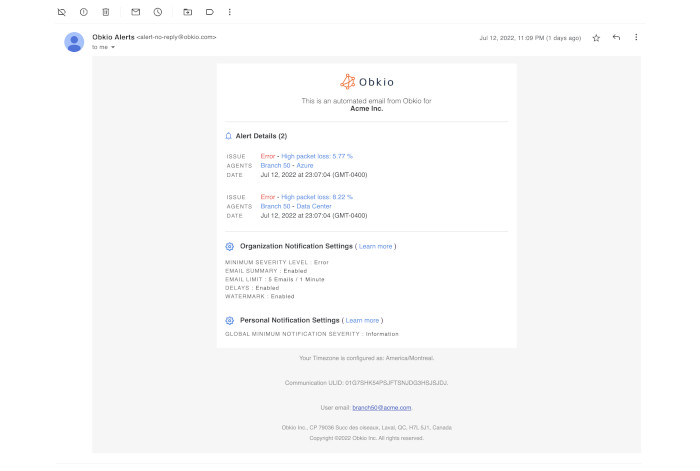
Trend Analysis and Capacity Planning: Analyze historical data to identify trends and patterns in network usage, application demands, and security incidents. Use this analysis to make informed decisions about network capacity upgrades, application optimization, and resource allocation.
Incident response and troubleshooting are critical components of effective network monitoring. When issues arise, it's important to have well-defined processes and strategies in place to quickly identify and resolve problems. Consider the following strategies for incident response and troubleshooting:
Centralized Log Management: Implement a centralized log management system to collect and analyze logs from various network devices and applications. This allows for easier correlation of events and faster identification of the root cause during troubleshooting.
Collaborative Troubleshooting: Foster collaboration between different teams, such as network operations, security, and application support, to efficiently troubleshoot issues. Establish clear communication channels and incident response workflows to facilitate collaboration and minimize downtime.
Network Segmentation and Isolation: Implement network segmentation and isolation techniques to limit the impact of network issues or security incidents. By dividing your network into separate segments, you can contain problems and prevent them from spreading across the entire network.
Optimizing network performance and managing capacity are ongoing efforts that ensure your network meets the demands of your organization. By continuously monitoring and optimizing performance, you can provide a reliable and efficient network experience. Consider the following strategies for performance optimization and capacity management:
Regular Performance Analysis: Conduct regular performance analysis to identify areas for improvement. Analyze network traffic, application response times, and device performance to pinpoint performance bottlenecks and implement optimizations.

Load Balancing and Traffic Engineering: Implement load balancing techniques and traffic engineering strategies to distribute network traffic evenly and optimize resource utilization. This helps prevent congestion, ensures efficient bandwidth allocation, and enhances overall network performance.
Capacity Planning: Continuously assess your network's capacity requirements and plan for future growth. Monitor traffic patterns, application demands, and resource utilization to anticipate capacity needs and proactively expand network infrastructure as necessary.
Network monitoring plays a crucial role in ensuring the security of your organization's network infrastructure and data. By implementing effective security monitoring strategies, you can detect and mitigate potential security threats. Consider the following strategies for security monitoring and threat detection:
Continuous Security Monitoring: Continuously monitor network traffic for anomalies, signs of malicious activity, and security breaches. Implement intrusion detection systems (IDS), intrusion prevention systems (IPS), and security information and event management (SIEM) solutions to enhance security monitoring capabilities.
Behavioral Analysis: Utilize behavioral analysis techniques to identify unusual patterns of network traffic or user behavior. Implement machine learning algorithms and anomaly detection mechanisms to detect potential threats that may bypass traditional security measures.
Threat Intelligence Integration: Integrate threat intelligence feeds and security information from reputable sources to enhance your security monitoring capabilities. Stay updated on the latest security threats, vulnerabilities, and attack techniques to effectively detect and respond to emerging threats.
By implementing these monitoring and optimization strategies, you can ensure that your network operates at its best, remains secure, and aligns with the evolving needs of your organization.
As technology and network landscapes continue to evolve, it's essential to adapt your network monitoring strategy to keep pace with new challenges and opportunities. In this section, we will explore key considerations for evolving your network monitoring strategy and staying ahead of the curve.

Automation and artificial intelligence (AI) are revolutionizing network monitoring by enabling faster, more accurate analysis and decision-making. Consider incorporating automation and AI-driven technologies into your network monitoring strategy:
Automated Performance Baselining: Utilize automated tools to establish performance baselines and identify deviations from normal behavior. This helps detect anomalies, performance degradations, and potential security breaches more efficiently.
Machine Learning for Anomaly Detection: Leverage machine learning algorithms to detect anomalies in network traffic, application behavior, and security patterns. By training models on historical data, AI-driven systems can proactively identify suspicious activities and potential threats.
Intelligent Alerting and Root Cause Analysis: Implement intelligent alerting mechanisms that reduce noise and provide more actionable insights. AI-powered systems can analyze the context of alerts, prioritize critical issues, and even perform root cause analysis to expedite troubleshooting.
As organizations increasingly adopt cloud services and hybrid network architectures, monitoring these environments becomes crucial. Consider the following approaches to monitor cloud and hybrid networks effectively:
Cloud-native Monitoring Solutions: Utilize monitoring tools specifically designed for cloud environments. These solutions can monitor virtual machines, containers, serverless functions, and cloud services, providing deep insights into performance, security, and costs.
Hybrid Visibility: Implement monitoring solutions that offer visibility across on-premises and cloud environments. This ensures seamless monitoring and correlation of network performance and security across hybrid architectures.
API Integration and Log Analysis: Leverage cloud provider APIs to collect telemetry data and integrate it into your monitoring systems. Analyze cloud logs alongside traditional network logs to gain a holistic view of your network and identify cross-environment issues.
Network segmentation is an effective strategy to enhance security and monitor network segments individually. Consider the following approaches to network segmentation:
Micro-segmentation: Implement micro-segmentation techniques to divide your network into smaller, isolated segments. This approach enhances security by limiting lateral movement and allows for more granular monitoring and control.
Virtual Local Area Networks (VLANs): Utilize VLANs to logically separate different departments, projects, or sensitive data within your network. This allows for focused monitoring and control of specific VLANs.
Segment-specific Monitoring Policies: Define monitoring policies tailored to different network segments. Customize monitoring thresholds, metrics, and reporting for each segment based on their unique characteristics and requirements.
To ensure the effectiveness of your network monitoring strategy, continuous evaluation and improvement are essential. Consider the following practices:
Regular Performance Reviews: Conduct regular reviews of your monitoring strategy to assess its effectiveness. Evaluate the accuracy of alerts, response times, and the alignment of monitoring objectives with business goals. Make necessary adjustments and optimizations based on these assessments.
Stay Abreast of Emerging Technologies: Keep an eye on emerging technologies and trends in network monitoring. Stay informed about new tools, methodologies, and best practices to adapt and enhance your monitoring strategy accordingly.
Collaboration and Feedback: Foster collaboration between network teams, security teams, and other stakeholders involved in monitoring. Encourage open communication and gather feedback to identify areas for improvement and ensure that the monitoring strategy aligns with the evolving needs of the organization.
Regular Training and Skill Development: Invest in continuous training and skill development for your network monitoring personnel. Keep them updated on the latest technologies, techniques, and industry trends to maximize the value they bring to your monitoring efforts.
By embracing automation, monitoring cloud and hybrid environments, implementing network segmentation, and continuously evaluating and improving your strategy, you can stay at the forefront of network monitoring and ensure the ongoing success of your monitoring initiatives.
Effective network monitoring is crucial for maintaining optimal network performance, ensuring security, and meeting the evolving needs of organizations. Active and passive monitoring methods offer distinct advantages, and a combination of both can provide a comprehensive view of your network.
In this blog post, we explored the differences between active and passive network monitoring, delved into their respective benefits, and discussed strategies for implementing and optimizing each approach. We also highlighted the importance of evaluating your network monitoring needs, considering factors such as network size, objectives, and resource allocation.
By implementing an active monitoring solution, you can proactively identify and address performance issues, optimize resource utilization, and enhance overall network availability. Passive monitoring, on the other hand, allows for comprehensive analysis of historical network traffic, aiding in capacity planning, security incident detection, and compliance audits.

We also discussed the synergy between active and passive monitoring, where combining both methods can provide enhanced network visibility, improved security monitoring, and optimized resource utilization. Leveraging automation, embracing cloud and hybrid monitoring, and implementing network segmentation were explored as key strategies to evolve your network monitoring strategy.
Remember, no single approach fits all organizations, and it's essential to tailor your network monitoring strategy to your specific requirements and goals. Regular evaluation, continuous improvement, and staying informed about emerging technologies and best practices will help you adapt and optimize your monitoring efforts as your network environment evolves.
In conclusion, network monitoring is an ongoing process that requires careful planning, implementation, and proactive management. By selecting the right monitoring methods, leveraging automation, and embracing emerging technologies, you can ensure a robust and efficient network infrastructure that meets the needs of your organization today and in the future.


























 Obkio Blog
Obkio Blog







